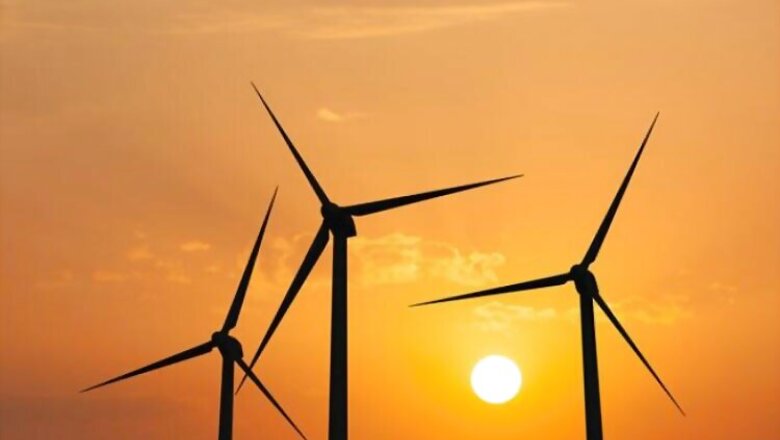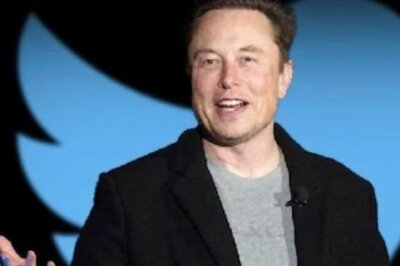
views
Renewable energy has finally begun to occupy new space in our news dailies. For 20 years there has been talk of how we can go renewable on energy that we generate. For 100 years we have heard of the Tesla model of generating 'wireless power' without the tangle of wires and copper that we need for conducting electricity in the ways that we have distributed electrical power across the world in clumsy ways. If you go by those sci fi films we are indeed a primitive race.
Imagine the scenario. Until 1995 if you had to make a phone call, you had to go to an instrument for you to access people elsewhere. To make a long distance call in nearly the entire last century, you had to wait anywhere from 15 minutes to 12 hours. The telegram, the post card and the money order have become defunct, thanks to the rapid evolution of technology since the 90s. Not energy.
If only we had an energy generating system at 5 kilowatts to a house at a cost of, say, Rs. 5 lakhs, everyone one of us would buy it. It will remove us from this debilitating dependence on the energy grid and all the quirks and challenges of power cuts and shutdowns.
Brutal spending on power projects
It will remove the massive and brutal public spending on power projects – whether it be thermal (with its hunger for coal), or hydel (that destroys people’s lives and forests and rivers with multiple dams that are put up across sensitive ecosystems), or nuclear (which brings us the severe threat of uranium- and thorium-based feedstock and risks of radiation, apart from the excesses of mining and the disastrous impact of such extraction in eco sensitive regions where such rare earth minerals are available).
Renewable energy is not about merely going solar as a ceremonial gesture. It is about ensuring conventional power generation systems are abolished forever. The age of iron was born around the time of Asoka in 300 BC and has lasted nearly till now. The age of coal was born in 1800 in England with the steam engine. Until then, the fastest that a man could ride was on horseback. The coming of the steam engine brought in the industrial revolution and the decimation of many civilizations – Incan, Mayan, the Indian civilization and those of countless other pockets of such cultural biodiversity that 'clothed' the planet for millions of years. It corroded the very essence of biodiversity and of cultures with rapid industrialization that it has brought in the last 200 years.
The age of coal has removed nearly all fossil deposits of such carbon which is 100 to 300 million years old in different parts of the globe. There's only 20 more years of extraction possible in most areas. With the coal has gone the rainforests. With the forests have gone our rivers. With the death of our forests and rivers there has been the death of cultural biodiversity and the complex, intricate tribal textures that India is losing by the day in the central heart of Chhattisgarh and Jharkhand.
It is the same story in Kalimintang of Indonesia or of some of those rich forests of Africa which are now being plundered by the Chinese as they power their way to becoming a super economy.
Renewable energy means in the next 5 to 6 years a shift in the way we look at energy itself and how technology can be disrupted along with cost. Today there are hydrogen-based power systems at 5 to 7 kilowatts that are available with splitting of water for hydrogen as fuel. But the systems are forbiddingly expensive and are used only perhaps by the U.S. Army and NASA.
How do we bring such technologies to the marketplace? How do we ensure that the very conversation shifts from our depending on energy infrastructure being created by governments or by external agencies, to a point where we generate at our cost as consumers the energy that we need for our homes, hotels, hospitals, and offices.
This shift is dependent on technology speak that is not yet quite there. But then if you look at even the seemingly innocuous sets of decisions that are made by state governments with all their efficiencies and with the lack of flexibility within government administrations, you will harbor more than a ray of hope for such a future where we cut dramatically our dependence on the grid.
Cost to government
There are of course concerns within the government about the power purchase cost shooting up, although it drops capital cost of new power plants. The govt is not used to such working. They have only know allocation and reporting expenditure budgets.
If a good chunk of farmers switched to the solar scheme, the average cost of power purchase in Karnataka which is Rs. 4.30 per unit from non-hydel channels (thermal and nuclear) will go up. The average cost of solar power purchase is in the range of Rs. 6.93 and Rs. 8.40 a unit.
The other measure to get industry to farm energy is also a sign of what is ahead in this decade. Additionally, power corporations and ESCOMs are required to see 10 per cent of the energy that they buy is sourced from non-conventional sources and there are concerns in the finance department that breaching the cap might increase purchase costs.
We have to scale up our solar capacity to at least 40,000 megawatt from the current levels of under 10,000 megawatt. The financial burden from increased purchase cost of solar power in any case will be passed on to consumers by the regulator because the capital cost is not incurred now by the government, it will be incurred by the end energy consumer. That is the shift in the conversation that is clearly ahead of us into the future.
Solar feeds the grid
The other story unfolding across many states in different measure depending on the earnest of the Chief Ministers, is that escalating conventional fuel prices is making electricity from solar plants more attractive for State distribution utilities. Young states such as Andhra Pradesh and Telangana are now looking at solar power to meet their peak deficit, as the alternative of gas-based power projects is far more expensive.
Some in the solar business believe that the overall energy deficit in the country is helping solar power since this is the fastest way to add capacity at a moderate tariff.
India today has 200,000 MW of capacity. The Planning Commission has estimated raising of this to 700,000 MW. The truth is, a thermal plant that is coal-based takes ten years before the electrons are ready to fire off energy into any grid. At these projections we have an absurd situation of having to build a 500 MW power plant every week for 20 years! This is not unknown to officials and ministers in the government, though no one wants to publicly admit it.
Currently India has anywhere from 7,000 to 10,000 MW of solar power projects in operation, depending on who's hazarding the guess. India will add another 2,000 MW in this year, reports suggest. For financing solar projects, policy makers need separate the solar and renewable energy sectors from the power sector for bank lending.
If you step back from the detritus of such data, you'll realize that the solution does not lie in such creation alone of central solar capacity that feeds the grid.
TN showed the way with a mandatory 10 pc in house renewable energy-based power being generated by industry. It has been hailed for the direction it has shown. However it has failed in implementation the last year thanks to lack of will from industry and the state govt's inability to enforce.
Such local generation of power within the place of the energy user - be it industrial, agricultural or domestic and commercial -- there's another massive saving that accrues out of saving in Transmission and Distribution losses which, to this day, account for 30 pc. This in effect means that about 5-6 times today's solar generation is the total losses in transporting energy on the grid!
If end users do not move away from the current mindset of how it's not 'our business' of users to also produce energy, there's no hope of beating the energy crunch any time in the future.
(Author Chandrashekar Hariharan is Executive Chairman and Co-founder of BCIL ZED Homes, Worlds number 1 green home builder)














Comments
0 comment